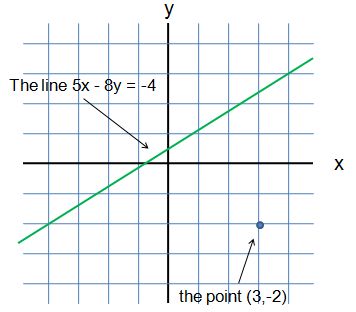Hilbert and Euclid's Elements
by Andrew Boyd
Today, making a point. The University of Houston's College of Engineering presents this series about the machines that make our civilization run, and the people whose ingenuity created them.
What's a point? What's a straight line? The concepts are so simple even young children can grasp them. But there's more than meets the eye.

How would you actually define a point for someone? Here's what Euclid said in his great mathematical work, the Elements: "A Point is that which has no Parts or Magnitude." That kind of gets at the idea, but "no parts or magnitude" also sounds like a perfectly good definition of nothing. We really want a point to be one very small, very precise spot. But then we're forced to ask what we mean by a very small, very precise spot. Well, we mean a point. That's about as circular as you can get.
It's a problem we have with all definitions. But it's especially problematic in the precise world of mathematics. The Elements remains so highly regarded because Euclid sought to define a few basic geometric concepts, like points and lines, state a few propositions about them, then follow the logical consequences as far as they'd take him. That approach was an entirely new idea, and an idea that remains a foundation for all of math and science today.

The idea was so new that Euclid didn't get everything perfect. He built an incredible edifice, but there were cracks in the foundation.
And a good part of the problem came from the frailty of his definitions. For a rock solid foundation, how do we define points and lines? The answer's really quite ingenious, but it took millennia to figure it out. The solution? Simply ignore what they mean. Don't define points or lines at all. Just describe how they relate to one another.
In 1899 the mathematician David Hilbert proposed a series of twenty propositions that could be used to rebuild Euclid's edifice. He used propositions like "For every two points, there exists a line that contains them." It doesn't require us to know what points are. It simply tells us that when we've got two of them, there's something called a line that contains them. And when you think about it, that's really all we need to know. Hilbert never defines points and lines.
Euclid couldn't see his way to doing that. It was too big of a leap to entirely abstract away the real world. Points and lines were real to Euclid, even if points had "no parts or magnitude" and lines were "length without breadth."
Today that's not the case. Abstraction is a trademark of modern mathematics. Mathematics is beautiful for its precision; a wondrous feat of human imagination. But it's also cold and, by itself, meaningless. It's up to us, as humans, to give it life.
I'm Andy Boyd at the University of Houston, where we're interested in the way inventive minds work.
Notes and references:
Those familiar with the x-y coordinate system taught in middle school will recognize that within a coordinate system, points and lines are easy to define precisely. A point is simply any pair of numbers (x,y), and a line is any set of points (x,y) that satisfies a·x + b·y = c for some numbers a, b, and c.

The x-y coordinate system (or, more formally, two-dimensional Euclidean space), can be used as a foundation for rebuilding Euclid's edifice — and more. Loosely speaking, the term analytic geometry refers to the study of geometry within coordinate systems.
However, Euclidean space already carries with it a relatively large amount of formal baggage. Hilbert's propositions are more basic and more in the spirit of Euclid's original work, and fall into the category of synthetic geometry.
Euclid. Elements of Geometry. London: Printed for W. Strahan, et. al., 1772. The copy of the book can be found at Google Books and is from the library of the University of Michigan.
Hilbert's Axioms. Taken from the Wikipedia web site: https://en.wikipedia.org/wiki/Hilbert%27s_axioms. Accessed November 17, 2009.
All pictures by E. A. Boyd.